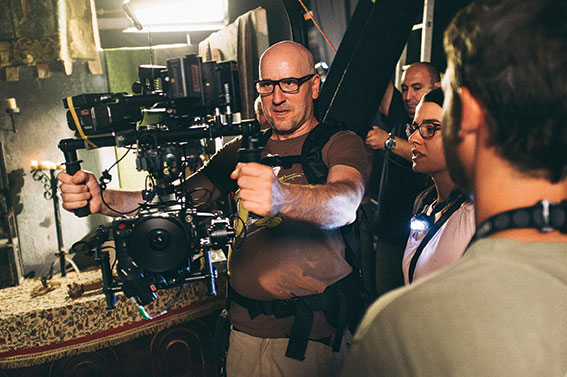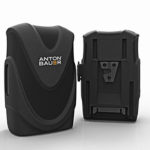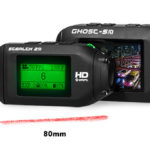
Channel 5’s first in-house docu-drama used the MōVI M10 rig to bypass traditional Steadicam use.
Posted on Oct 31, 2014 by Alex Fice
Britain’s Bloodiest Dynasty tells the story and re-enacts key moments in the bloody saga of betrayal and revenge of the greatest Royal dynasty in English history.
At the start of this year, 5Production, Channel 5’s in-house production company, was commissioned to make a new presenter-led drama-documentary fronted by historian Dan Jones for Channel 5. Currently in production, Britain’s Bloodiest Dynasty tells the story and re-enacts key moments in the bloody saga of betrayal and revenge of the greatest Royal dynasty in English history. The production is the first drama documentary made in-house for Channel 5.
With the rise of high definition, glossy television drama in the last decade (both in terms of the BARB ratings and the production values), the broadcaster needed to raise the bar to meet the very high expectations of today’s audiences. Executive Producer Dan Gold notes:
“The standard of television is very high, higher than it has ever been. We didn’t just want to meet this challenge, we wanted to go beyond it, to be innovative and to deliver a series with a distinct character that puts a new spin on history.”
The Plantagenet empire of the 11th and 12th centuries was vast, meaning the project necessarily spanning much of England and France. So locations and logistics cornered a sizeable proportion of the overall budget. Production manager Tim Marckwald comments:
“We worked closely with VMI to select kit that would be easy to transport, cost-effective to hire and produce the results we wanted. The performance of the latest production kit means that you can produce content more quickly, more creatively and more cost effectively than ever before.”
 After much discussion and lengthy trials, the crew were among the first in the UK to adopt the MōVI M10.
After much discussion and lengthy trials, the crew were among the first in the UK to adopt the MōVI M10.
After much discussion and lengthy trials, the crew were among the first in the UK to adopt the MōVI M10. The MōVI is a servo-driven handheld support that borrows technology from aerial drones to deliver fluid, stable pictures.
“With the training day provided and a few days acclimatising to the kit, we were able to achieve what it takes several years for a Steadicam operator to accomplish. And we didn’t need a separate specialist operator to achieve it. The MōVI offers an affordable solution for similar results.” Says Tim.
MōVI can capture very smooth, dynamic pictures, with stable movement in the horizontal plane giving a particularly appealing look. Using this latest equipment gave the team the chance to add a new dimension to the production.
“We started thinking in terms of choreography, how the camera would manoeuvre, rotate, angle and elevate through the scene.” Noted Marckwald. “The initial pictures were very promising straight away, but over time and as we became more familiar with the MōVI and more confident with its handling, we pushed it further and harder. We were delighted at how easy it was to use and excited by the results we achieved. Most of the pictures we captured could be shot with a Steadicam, but it would have taken a seasoned operator, an additional cost we couldn’t have supported. So the MōVI let us do something we simply couldn’t have considered otherwise”
Mounted to the rig was Canon’s C300, shooting in HD at 25fps. It is a great fit for the MōVI, being compact and relatively light weight. Another advantage of the camera was its low light capabilities.
As the crew was shooting in a number of dark medieval settings, the camera had to cope with candle-lit halls, torch-lined corridors, cellars and thick woodland. According to the DoP, the camera kit generally delivered great results, with one small caveat. The camera was equipped with Zeiss Compact Primes (CP.2) lenses which are very sharp and relatively lightweight. Although the team was pleased with the results, on occasion the DoP needed a slightly faster aperture than the typical T2.1 or T2.9 available in the range.
“With the MōVI, it’s tempting to introduce movement into every scene. But in very low light conditions, this can be difficult, without going to T1.9. Opting for something like a fast Ultra Prime would have given us that extra speed, but at the cost of carrying and using heavier, longer lenses which makes managing the MōVI rig much tougher.” Observes Marckwald.
Production on Britain’s Bloodiest Dynasty is coming to a close, with a transmission date likely to be sometime this Autumn.








